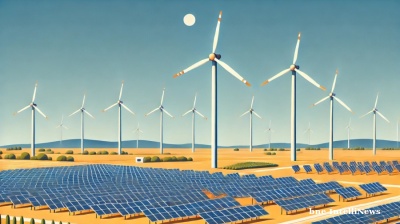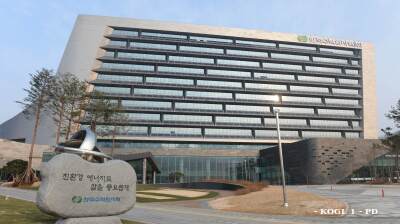Siemens Gamesa, the leading wind-turbine manufacturer, has called for a quota system on the amount of EU-produced turbines installed in the trade bloc, reports the Financial Times.
Jochen Eickholt, the chief executive of Siemens Gamesa, one of the world’s largest turbine makers, told the FT that if Europe were serious about energy independence and wind energy, turbines should be considered as strategically important, and measures should be introduced to protect such a critical industry.
“If our product is critical to the infrastructure of our countries . . . then certainly, not for 100% of the installations but certainly for a certain portion of the installations [in Europe], you need to have things in your own hands,” he told the FT.
“That means there needs to be an element of knowing how to operate these things and manufacturing these things,” he told the newspaper.
Europe would “perhaps not have the cheapest answer, but would have an answer” if there are geopolitical tensions or supply chain problems, he said.
European wind turbine manufacturers have been struggling financially, cutting jobs and closing factories. The large original equipment manufacturers (OEMs) have in fact been operating at a loss because of supply chain disruptions and commodities, transport and labour inflation.
Siemens Gamesa, the third-largest maker last year and the largest for offshore turbines, according to the Global Wind Energy Council (GWEC), recorded a loss of €1.2bn ($1.17bn) in the nine months of 2022 ended in June, which was 233% more than the loss suffered in the same period one year before, reported the FT.
The Spain-traded company, which is also going through a restructuring, recently announced it was axing 2,900 jobs, which is one-tenth of its global staff.
Europe’s new energy security strategy – REPowerEU – calls for 510 GW of wind energy by 2030, up from 190 GW currently installed. WindEurope, the trade association, projects that this goal is plausible.
Eickholt commented there was “definitely a risk” that the wind turbine industry would come to look like the solar panel industry, where Chinese manufacturers dominate the market and the supply chain, a situation that the International Energy Agency (IEA) warned again in a report published in July.
“You have to see that we are meeting Chinese competition across the global markets and also increasingly in Europe,” Eickholt said, noting that Chinese manufacturers can often receive “additional support, typically from national or regional sources”, with ‘innovation funding’ in some cases 10-fold higher than that of the Europeans.
“At the end of the day, we feel that there is an imbalanced battle, or at least we do not have the same level of opportunities here,” he told the FT. “We are asking for a level playing field.”
bneGREEN

Global renewables to double by 2030, but IEA warns momentum must accelerate
Global renewable energy capacity is on course to double by 2030, reaching 4,600 GW—comparable to the current combined total of China, the European Union and Japan—according to the International Energy Agency’s Renewables 2025 report.

South Korea’s embrace of SMRs as a pillar of nuclear policy
Spearheaded by Korea Hydro & Nuclear Power, these compact reactors are increasingly being seen as central to the nation's energy policy, offering flexibility, scalability, and ultimately a pathway to carbon neutrality

China leads global energy export race as clean tech shipments hit record highs
China is outpacing the US in the global race to dominate energy exports, as demand for clean technology surges and fossil fuel revenues plateau. China exported $120bn in green technology through July 2025, surpassing the US' oil and gas exports.

Philippines sets out policy framework for first nuclear power plant
The initiative marks a significant step in reviving the Philippines’ long-dormant nuclear ambitions. Following the 1973 oil crisis, the country constructed the 621 MWe Bataan Nuclear Power Plant in 1984 at a cost of $460mn – around $1.4bn today.
_Cropped_1759915420.jpg)


.jpg)